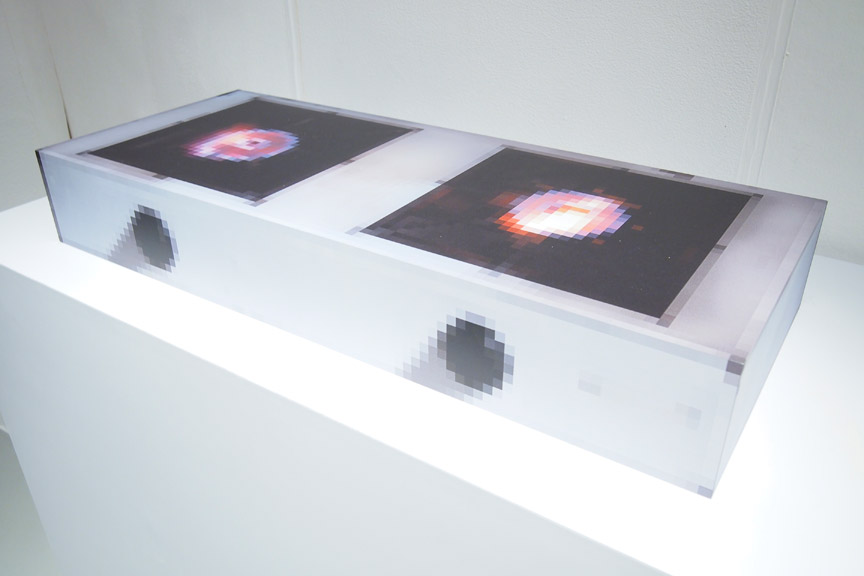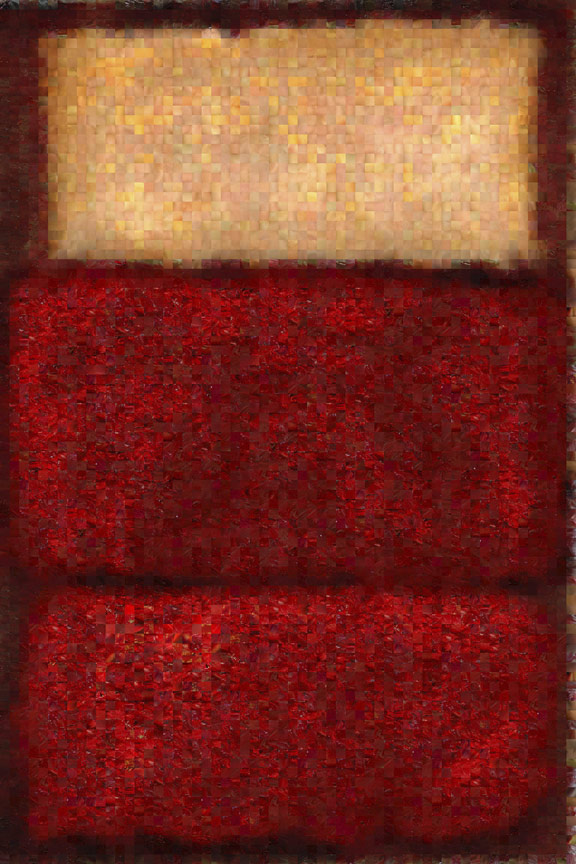Shows
Rashid Rana’s “Translations/Transliterations”


Rashid Rana’s first solo show in Hong Kong, titled “Translations/ Transliterations,” and organized by Gandhara-Art for the Hong Kong Arts Centre’s (HKAC) Pao Galleries, includes his “greatest hits,” but is largely a showcase of his newer works. All of Rana’s works are about dualities; though many address the clichés of sex and violence, his newer works are more conceptually challenging, exploring the validity of history, social constructs of beauty and the ubiquitous digital mediation of everyday life.
Rana is well-known for his composite images: from a distance, each work appears to be a large image, but on closer inspection is actually comprised of a grid of thousands of pixel-like photographs. Though he began exhibiting photo-mosaic works in 2003, the method existed for over a decade beforehand as a commercial imaging technique, even utilized in advertisements by household names such as Benetton and DC Comics.
Visitors are greeted with four of Rana’s best-known monumental photomontages in the first room. Offshore Accounts - 2 (2006) is one of his most striking works: an apparently tranquil image of the sea studded by flotsam is composed of a grid of pictures of ocean pollution and historic paintings of colonial sailing ships. Certain images, such as one striking photograph showing a raft of plastic bottles, draw the viewer in closer. Considered with the suggestive title—which may refer to stories or economic tallies—the work contrasts an idyllic image of the ocean with the legacy of colonial spoils it has facilitated, and the environmental neglect that now endangers what was considered a boundless resource.

Red Carpet -1 (2007), another photo-mosaic, is a social critique inspired by the 2007 assassination of Pakistani prime minister, Benazir Bhutto. It seems to depict a Pakistani carpet, but is composed of bloody, horrific photographs of animals being slaughtered. Though Rana substitutes animals for humans, the carnage in the photographs remains visually revolting, intended to shock the viewer. Regardless, one becomes used to the blood after looking at it for a while—a commentary on how quickly society becomes desensitized to violence through its re-presentation.
The absence of the “Veil” series, arguably Rana’s best-known work, was disappointing. These pieces, which are large depictions of veiled women actually comprised from hundreds of pornographic photographs, may have been left out because of their provocative nature in a public art gallery.

The show does not completely omit pornography-related work however. Three pieces of the series “What Lies Between Flesh and Blood” (2009) hang at the entrance of the second room; two of the works—What Lies Between Flesh and Blood - 1 (2009) and What Lies Between Flesh and Blood - 2 (2009)—mimick Mark Rothko’s Color Field paintings from afar. Getting closer one realizes that the red and flesh-colored paintings are created from close-up photographs of blood and discolored skin collected from pornographic magazines, medical journals and other print media, to address issues surrounding sex, violence and corporeal decay. Given Rothko’s troubled personal life—culminating in his 1980 suicide—this gruesome series seems to be an appropriate allusion to evoke the abstract expressionist.
The monumental five-and-a-half-meter-long photomontage Everything and Nothing (2011) is notable for its focus on academic dualities rather than international conflicts or sexual mores. It depicts two side-by-side bookcases: the one on the left appears clear and in-focus, while the one on the right seems blurred. Both bookshelves are composed from smaller photographs of canonical European art history books. However, contrary to the appearance of the bookshelves, the small images on the right are clear and those on the left are blurred—raising questions about historical documentation and authenticity. Rana suggests that seemingly clear narratives that structure historical knowledge might be supported by dubious or obfuscated materials, reminding us through a visual metaphor that the neat “big picture” is only a convenient illusion. Though this concept is literal, it highlights a complex philosophical issue, suggesting a new development in the artist’s practice.
Rana’s most recent works tend to examine the relationship between art, everyday objects and technology. The Stove (2010-11), A Courier Package (2010-11), and Yellow Flowers (2007), are displayed in a separate alcove, and all explore the dichotomy between a functional prosaic object versus its non-functional clone—made of C-printed aluminum boxes featuring pixilated images of the objects they depict. Though these works seem limited in scope, they pivot on the interplay between art and its digital representation: Rana understands that viewers nowadays often encounter artworks as flat, digital images, typically through the internet. His “pixilated sculptures” anticipate how their image will be distorted by digital remediation, and the artist reverses this process—by making images into objects—for the gallery space.
While these latest pieces add a witty new dimension to Rana's work, the highlights of his recent practice are undoubtedly his large-scale photo-montages. Though his relentless focus on dualities can become repetitive, his work has evolved as he challenges broader and more nuanced social issues.







